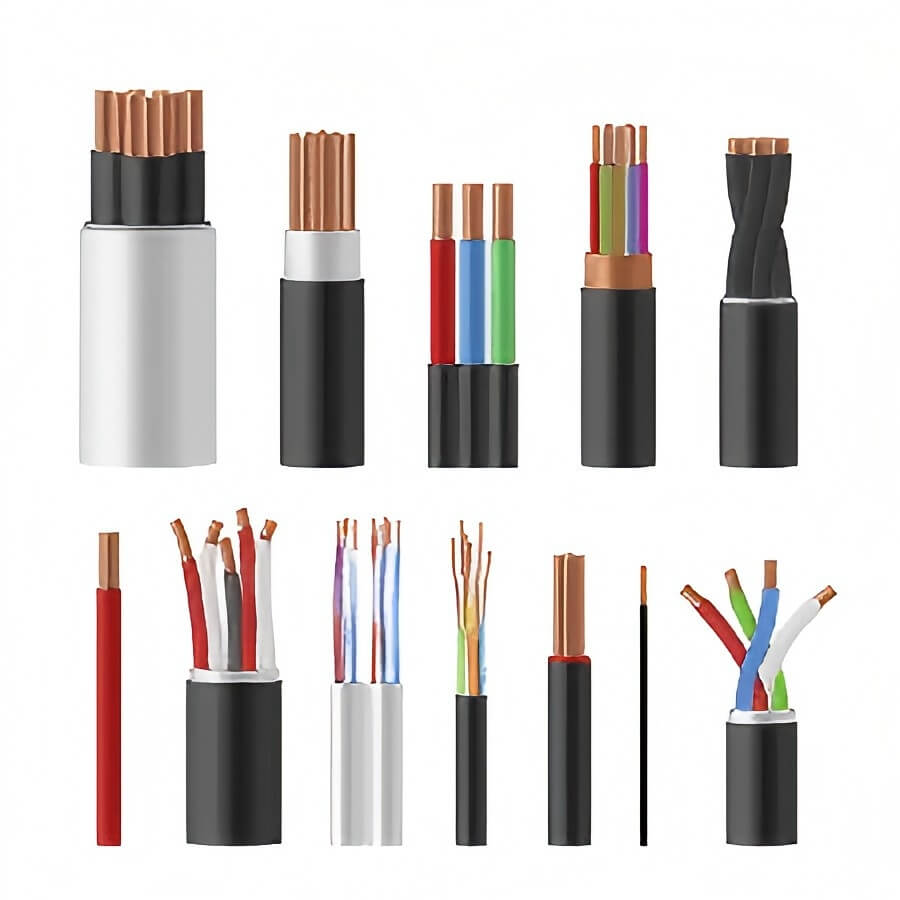Introduction
Electrical cables are the lifelines of modern infrastructure, powering homes, businesses, and industries. Despite their importance, many people overlook the significance of choosing the right cable types and size for specific applications. Whether you’re an electrician, a contractor, or a homeowner looking to upgrade your electrical system, understanding cables can save you from costly repairs, energy inefficiencies, and potential safety hazards.
This guide will explore various types of electrical cables, their ideal applications, how to select the correct size based on voltage and current ratings, and best practices for installation. By the end of this article, you’ll have the expert knowledge needed to make informed decisions about electrical cables, ensuring a safe and reliable electrical system in any setting.
Electrical Cables Types
A. Non-Metallic Sheathed Cable (NM)
Non-metallic sheathed cable, commonly referred to as NM or Romex, is the standard choice for residential wiring. It consists of multiple insulated conductors encased in a flexible plastic sheath, making it easy to install behind walls, ceilings, and floors.
Common Uses:
- Residential electrical wiring for outlets, lights, and switches
- Indoor applications where moisture is not a concern
Advantages:
- Affordable and easy to install
- Lightweight and flexible, making it suitable for home DIY projects
Disadvantages:
- Not suitable for outdoor or high-moisture environments
- Susceptible to physical damage if not properly enclosed
B. Underground Feeder Cable (UF)
UF cable is designed for direct burial applications, meaning it can be placed underground without additional conduit. It has a more robust protective coating compared to NM cable, making it resistant to moisture, soil, and other environmental factors.
Features and Applications:
- Ideal for outdoor lighting, irrigation systems, and detached structures
- Withstands extreme weather conditions
Installation Guidelines:
- Must be buried at least 18 inches deep for safety
- Should be routed away from areas where heavy equipment may cause damage
C. Armored Cable (AC)
Armored Cable (AC) provides extra protection with its flexible metal sheathing, making it a preferred option for high-risk environments. The metallic layer acts as a shield against physical damage, electromagnetic interference, and even rodents.
Characteristics and Benefits:
- Durable and resistant to crushing or puncturing
- Suitable for industrial settings and commercial buildings
Installation Considerations:
- Requires proper grounding for safety
- More expensive and complex to install than NM cable
D. Metallic Sheathed Cable (MC)
MC cable is a close relative of AC cable but is built to higher specifications, making it a go-to choice for hospitals, data centers, and commercial properties where power integrity is critical.
Overview of MC Cable Construction:
- Includes insulated conductors wrapped in an aluminum or steel sheath
- Often equipped with a separate grounding conductor
Suitable Applications and Challenges:
- Used in areas where high electrical performance is necessary
- Requires specialized tools for proper installation
Electrical Cable Sizes
American Wire Gauge (AWG)
AWG is the standard measurement system for determining wire thickness. The lower the gauge number, the thicker the wire and the higher its current-carrying capacity.
Why Size Matters:
- Using the wrong size can lead to overheating and electrical fires
- Thicker wires are needed for high-power appliances such as ovens and HVAC systems
Voltage and Current Rating
Electrical cables must be selected based on voltage and current requirements to prevent overloading.
Factors to Consider:
- Length of the cable (longer runs require larger wires to prevent voltage drop)
- Power demand of connected appliances
Ampacity and Derating
Ampacity refers to the maximum current a cable can handle before overheating. Derating factors, such as ambient temperature and bundling multiple cables together, must be considered to ensure safety.
Guidelines for Safe Cable Sizing:
- Refer to the National Electrical Code (NEC) for ampacity charts
- Always account for environmental conditions that may affect cable performance
Installation of Electrical Cables
A. Cable Routing and Support
Proper cable routing ensures longevity and safety.
Best Practices:
- Use cable trays or conduits for organized and secure routing
- Avoid running cables near heat sources or sharp edges
B. Cable Termination and Connection
Secure cable connections are essential for preventing power losses and potential hazards.
Techniques for Proper Termination:
- Use high-quality connectors for long-lasting reliability
- Ensure proper tightening to avoid loose connections
C. Cable Protection and Grounding
Grounding is a crucial safety measure that prevents electrical shocks and reduces fire risks.
Guidelines for Effective Protection:
- Always use grounding conductors when required
- Protect cables from mechanical damage by using conduits or raceways
Common Questions about Electrical Cable Types, Sizes, and Installation
1. What are the differences between NM and UF cables?
NM cable is designed for dry indoor environments, while UF cable is built for underground and outdoor use.
2. How do I determine the correct cable size for a specific application?
Consult an AWG chart, consider voltage drop over distance, and ensure the cable meets ampacity requirements.
3. Why is proper cable support and routing important during installation?
It prevents physical damage, overheating, and electrical failures that could lead to fire hazards.
4. What are the key considerations for grounding electrical cables?
Grounding ensures electrical stability and safety by preventing stray voltage and reducing shock hazards.
Conclusion
Understanding electrical cable types is not just about choosing the right size—it’s about ensuring safety, efficiency, and compliance with industry standards. The right cables can improve energy efficiency, protect your electrical system from failures, and extend the lifespan of appliances. Whether you’re wiring a new home, upgrading a commercial facility, or installing industrial-grade power solutions, following best practices for cable selection, routing, and installation is essential.
By applying expert knowledge and adhering to safety guidelines, you can ensure that your electrical systems operate efficiently and safely for years to come.

